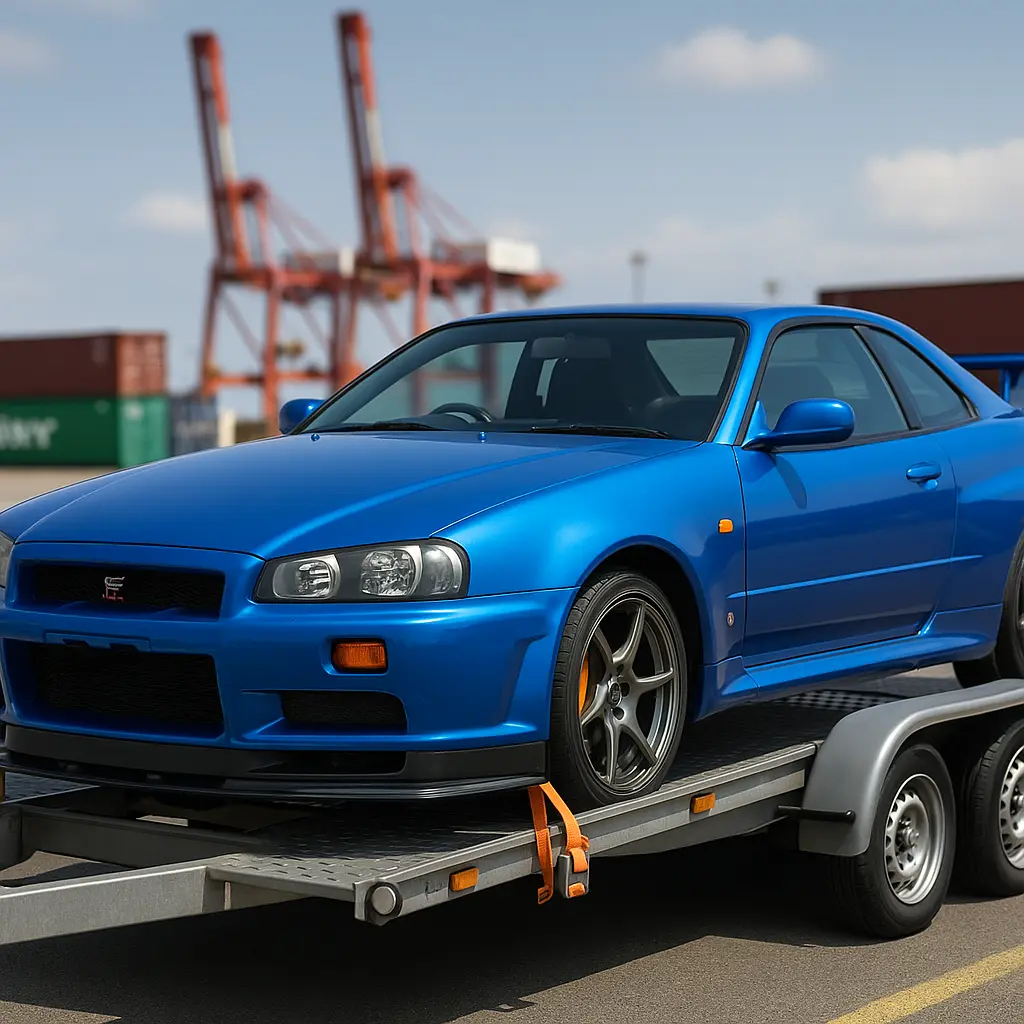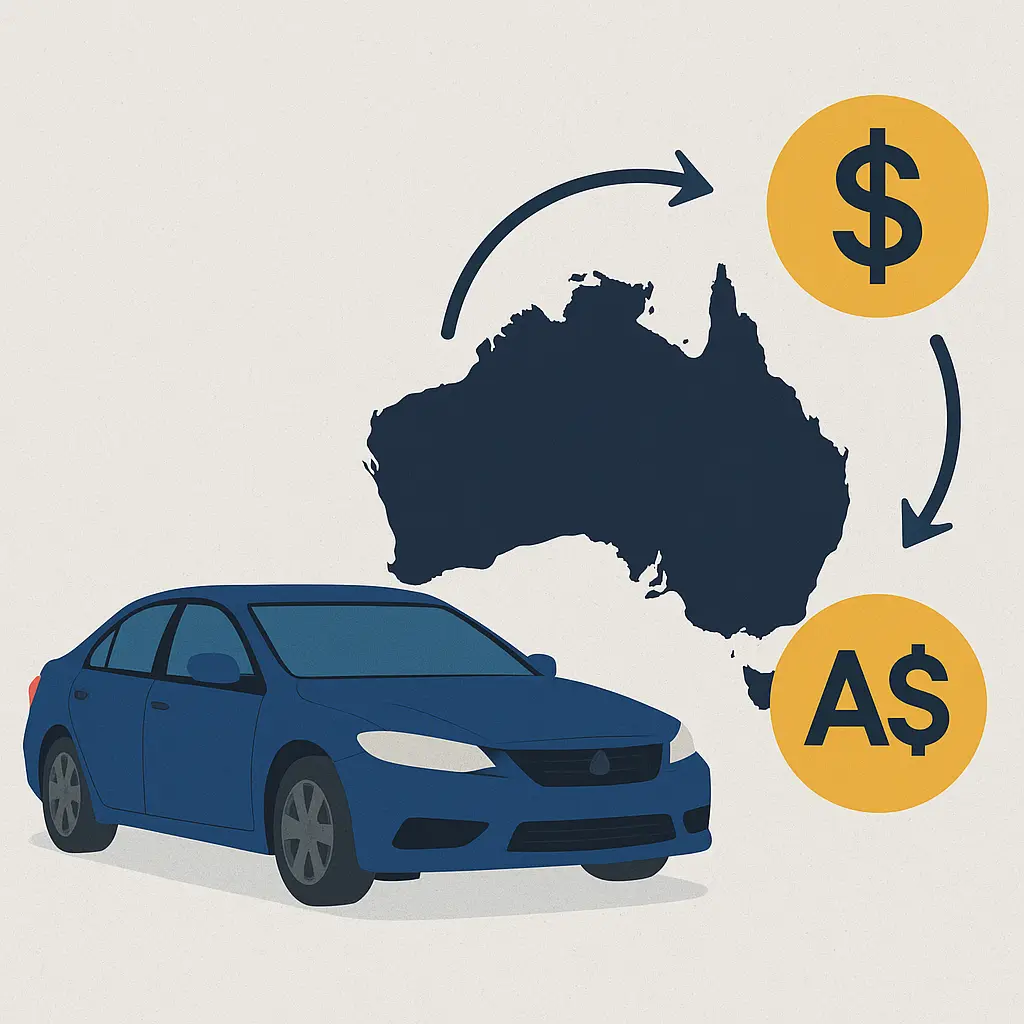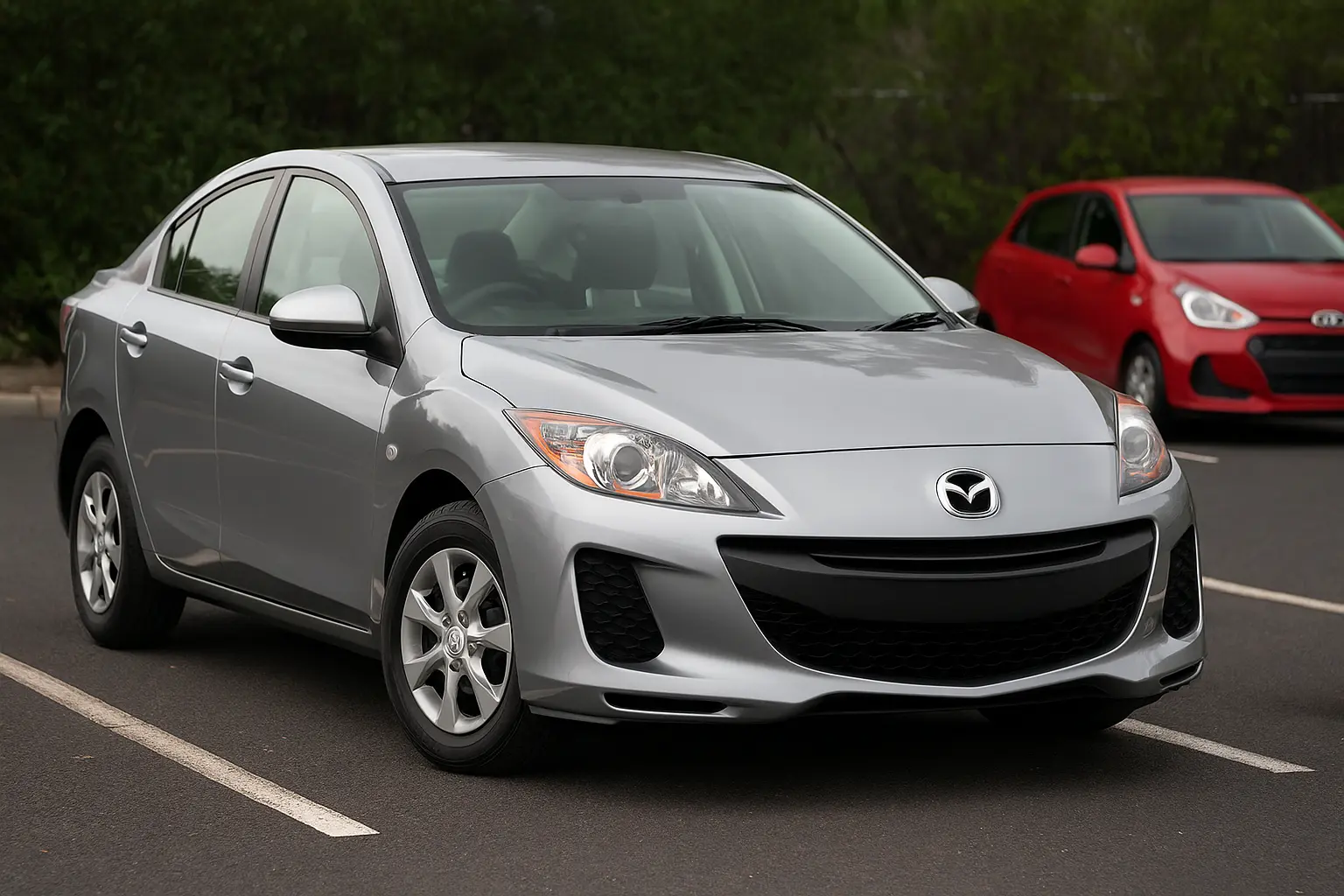Should You Import a Car in 2025? Pros and Cons for Aussie Buyers
Importing a car has become a growing trend among Australians seeking unique vehicles, better specs, or simply a more affordable deal compared to local market offerings. But is it worth the effort in 2025?
In this comprehensive guide, we’ll break down everything you need to know about car imports in Australia—from the pros and cons, to hidden costs, rules, insurance issues, and the potential savings.

🧭 Why Do Aussies Consider Importing Cars?
Importing a car isn’t just about owning a rare ride or flashy JDM sports car. It’s often a practical decision. Whether you’re looking for:
A car that’s not available in the local market
A better version of a locally available car (more features, better trim)
Competitive pricing from foreign markets
Classic or collectible cars
Unique fuel-efficient or electric models
Many Aussie buyers see importing as a cost-benefit decision that also caters to their individuality or driving needs.
📦 What Types of Imports Exist in Australia?
Before you dive in, it’s important to understand the types of imports allowed:
1. Personal Imports
For individuals who’ve owned and used the vehicle overseas (e.g., during work or living abroad) for over 12 months.
2. Specialist and Enthusiast Vehicles (SEVs)
These include rare, performance, electric, or classic cars that meet SEV criteria and aren’t otherwise available locally.
3. Parallel Imports
Often newer vehicles brought in by individuals or businesses that bypass official brand dealerships.
4. Grey Imports
Used vehicles imported through alternative (non-franchise) dealers—commonly JDM models.
✅ Pros of Importing a Car to Australia in 2025
1. Cost Savings
Many vehicles, particularly from Japan, the UK, and the USA, can be significantly cheaper—sometimes up to 30% less than local prices.
2. Unique Models and Features
Want a turbocharged version of your favourite hatch not sold in Oz? Imports may offer higher specs, unique trims, or models discontinued locally.
3. Higher Resale Value for Rare Cars
Classic cars or specialist imports can hold or even increase in value due to their scarcity.
4. Better Selection of EVs
Markets like Japan and the UK are ahead in EV adoption. You’ll find models with better range, lower mileage, and competitive pricing.
5. Access to Right-Hand Drive (RHD) Markets
Japan and the UK both drive on the left, meaning RHD imports don’t need conversion—ideal for Australia.
6. Personalisation and Enthusiast Culture
Importing lets car enthusiasts access performance models like the Nissan Skyline, Toyota Chaser, or Mitsubishi Evo—popular within the JDM scene.
❌ Cons and Risks of Car Imports
1. Compliance and Regulatory Hurdles
Imported vehicles must meet the Australian Design Rules (ADR). You’ll need compliance checks, potentially modifications, and official registration documentation.
2. Shipping and Import Costs
Don’t forget about freight, marine insurance, port charges, customs duty, GST (10%), and the luxury car tax (LCT) if applicable. These can add thousands to your bill.
3. Warranty and Servicing Issues
Parallel or grey imports may lack manufacturer warranty in Australia. Plus, sourcing parts and trained mechanics can be tough and costly.
4. Insurance Complexity
Not all insurers are happy to cover grey or parallel imports. Premiums may be higher, or you may face limited coverage.
5. Delayed Delivery
Shipping times, port delays, or compliance issues can stretch the waiting period—sometimes for months.
6. Limited Financing Options
Securing a loan for an imported vehicle may be more difficult. Many lenders prefer locally delivered cars.
💸 Cost Breakdown – How Much Does Importing a Car Cost?
Here’s a rough breakdown of typical costs involved in importing a vehicle:
| Cost Category | Estimated Range (AUD) |
|---|---|
| Purchase Price | $5,000 – $80,000+ |
| Shipping & Freight | $1,500 – $5,000 |
| Marine Insurance | $300 – $1,000 |
| Customs Duty (5%) | Varies (Based on value) |
| GST (10%) | On CIF value + duty |
| Compliance & Modifications | $1,000 – $5,000 |
| Registration & Stamp Duty | $1,000 – $3,000+ |
| Luxury Car Tax (if >$76,950) | 33% on the luxury value |
Pro Tip: Use a customs broker or specialist import agency to avoid surprises.
🛠️ What About Servicing and Spare Parts?
A key concern is availability of parts. Here’s what to consider:
Japanese Imports: Relatively easy to source parts for Toyotas, Nissans, Hondas.
European Imports: Mercedes or BMW parts might cost more and take longer to ship.
US Imports: LHD conversions are costly and parts may need sourcing from the States.
You may also struggle to find local mechanics familiar with your specific model—especially rare or high-performance variants.
📋 Importing Rules and Regulations in 2025
The Australian Government has tightened and modernised import laws to regulate the flow of vehicles. Key legislations include:
1. Road Vehicle Standards Act (RVSA)
Replaced the Motor Vehicle Standards Act in 2021. Requires:
Vehicle Identification Plate (VPI) approval
Register of Approved Vehicles (RAV) listing
Import Approval from the Department of Infrastructure
2. SEV Register
Your vehicle must be listed on the SEV Register to be eligible for specialist import.
3. Border Security and Biosecurity
Your vehicle must be cleaned thoroughly. Any biosecurity risk (dirt, plant matter, etc.) could cause quarantine delays.
🧠 Should You DIY or Use an Importer?
You can import a car yourself, but many Aussies prefer using a professional importer due to the complex process.
📌 DIY Import:
Lower cost
More control
But requires paperwork, customs knowledge, and logistics handling
📌 Importer Service:
Costs more
Easier, end-to-end service
Often includes compliance, shipping, and delivery
Look for licensed importers with solid reviews, especially those that handle SEVs or EVs.
📈 Popular Cars Aussies Import in 2025
Here’s a list of models commonly imported by Australians in 2025:
🚗 JDM Legends:
Nissan Skyline GT-R
Toyota Supra
Mazda RX-7
Honda Integra Type R
⚡ EV Imports:
Nissan Leaf e+
Honda e
Hyundai Ioniq 5 (Japanese trim)
VW ID.3 (UK import)
🛻 American Pickups (LHD to RHD Converted):
Ford F-150
RAM 1500 TRX
Chevrolet Silverado
🕰️ Classic Cars:
Porsche 911
1960s Mustangs
1970s Toyota Celicas
Mercedes-Benz SLs
🛡️ How to Get Insurance for Imported Cars
Getting your grey or parallel import insured can be tricky. Here's how to navigate it:
✅ Tips:
Use specialist insurers (e.g., Enthusiast Insurance, Shannons)
Provide full documentation (import approval, compliance, VPI)
Mention any modifications upfront
Shop around—rates vary widely
Keep in mind that repair coverage may be limited due to parts scarcity.
🧾 Financing an Imported Car
Getting a loan on an imported car is harder than a local dealership car. Some banks may decline due to:
Lack of standard valuation
Perceived risk of resale
Uncertainty around warranty and ADR compliance
If you want to finance:
Look for lenders specialising in car imports
Be ready for a higher interest rate or deposit
Pre-approval may take longer
🧠 Tips Before You Import a Car in 2025
✅ Research the Model Thoroughly – Ensure it’s eligible for import and listed under SEV or personal use.
✅ Get a Quote from Multiple Importers – Including hidden costs.
✅ Check for Recalls – Some imported vehicles may not be compliant due to recall-related bans.
✅ Read the Fine Print on LCT and GST – These taxes can make or break your budget.
✅ Inspect Pre-Purchase or Get Local Inspection on Arrival – Especially for used imports.
✅ Join Aussie Car Import Forums – Learn from others' experiences (like JDM forums, EV communities, etc.)
🏁 Final Verdict: Should You Import a Car in 2025?
Importing a car can be rewarding, offering you uniqueness, performance, and sometimes better value. But it's not for the faint-hearted.
Importing makes sense if:
You want a rare model or higher spec
You’re buying a collectible, JDM, or EV model not sold locally
You understand the compliance and insurance risks
Better to buy locally if:
You value aftersales support and warranty
You're unfamiliar with the paperwork or risk
You want fast delivery and resale confidence
🧮 Quick Pros & Cons Summary
| Pros | Cons |
|---|---|
| Unique models and trims | Complicated regulations |
| Potential cost savings | High hidden fees |
| Better EV options | Warranty and servicing concerns |
| Performance variants not sold here | Insurance and financing hurdles |
| Higher resale for rare models | Long wait times |
Conclusion
Car importing isn’t for everyone, but in 2025, it's a tempting option for Aussies who want more variety, better features, or a piece of motoring history not offered locally. If you’re willing to do your research—or hire the right experts—you can end up with a truly special car that turns heads on Aussie roads.
Leave a comment
Your email address will not be published. Required fields are marked *




















